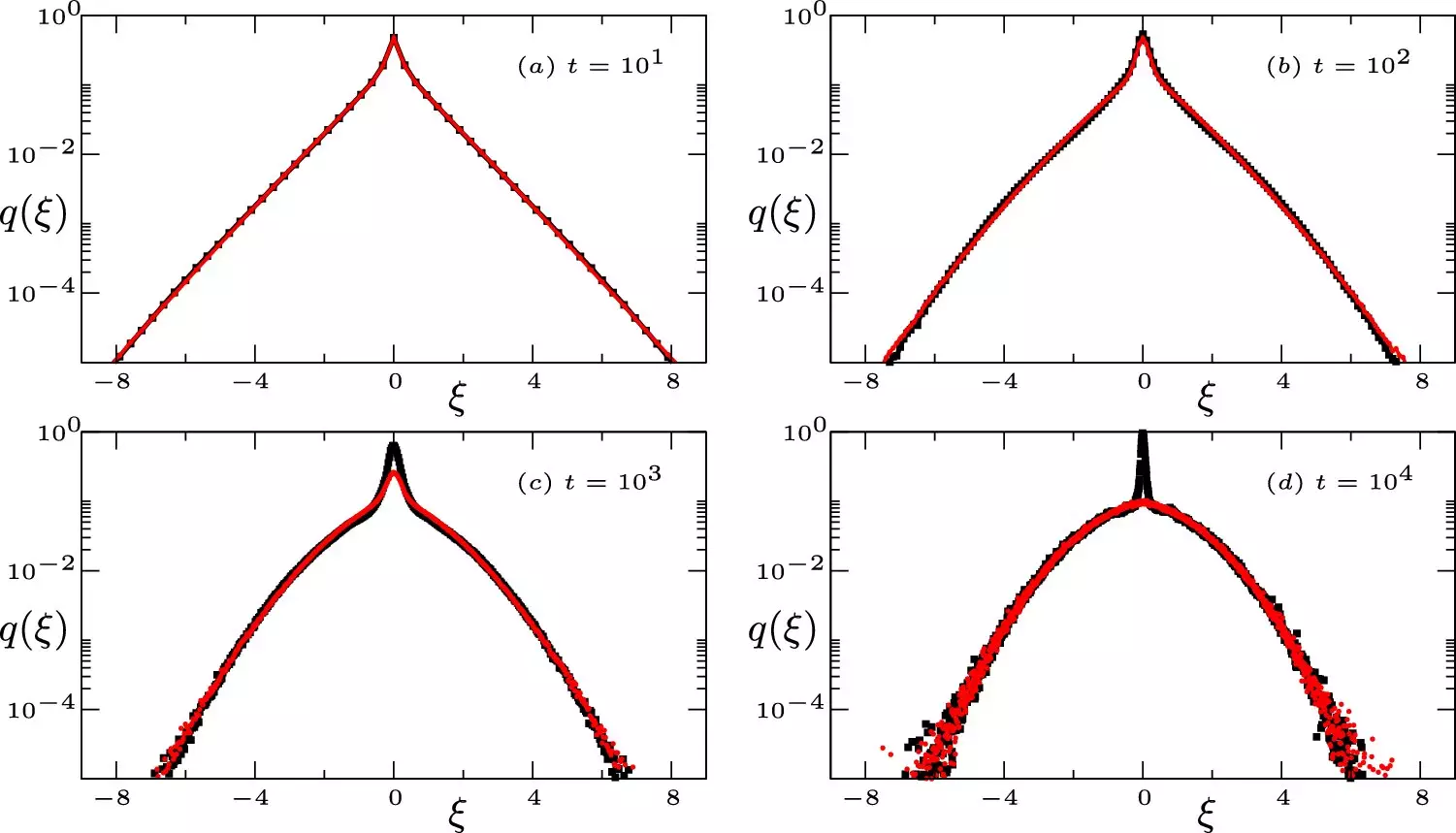Particle diffusion, a fundamental process in physics, has long fascinated scientists with its seemingly random nature. However, recent experiments have shed light on peculiar patterns in particle diffusion that hint at a hidden complexity yet to be fully understood. In a groundbreaking study conducted by Adrian Pacheco-Pozo and Igor Sokolov from Humboldt University of Berlin, this enigmatic behavior is examined in detail, providing valuable insights into the behavior of fluids and the potential for improved diffusion models.
Beyond Brownian Motion
In most cases, diffusion occurs as particles move through random fluctuations, pushed and jostled by neighboring particles. This common phenomenon, known as Brownian motion, has been mathematically represented by a normal distribution curve. The bell-shaped curve illustrates the probability of finding a particle at a specific displacement from its original position. However, some situations deviate from this norm, exhibiting a sharp peak at the center of the curve where particle density is unusually high.
Pacheco-Pozo and Sokolov delved into the nature of these persistent peaks by exploring the mathematics of “continuous-time random walk” models. In this model, a diffusing particle waits for a random period before making a jump to a new position. Interestingly, the longer the particle waits, the further it jumps. Through their research, the duo discovered that strong correlations exist between the displacements of particles following similar trajectories in both time and space. These correlations give rise to the sharp central peak observed in certain diffusion patterns.
A Deeper Understanding
While the continuous-time random walk model provided valuable insights, it failed to fully replicate the shape of the sharp peak. This discrepancy suggests the presence of more intricate time-varying connections between particles. Pacheco-Pozo and Sokolov’s findings open up new avenues of exploration for future studies, aiming to uncover the nature of these complex connections and their impact on particle diffusion.
The identification and understanding of unusual patterns in particle diffusion have significant implications. By developing accurate models that account for the observed correlations and sharp peaks, researchers can create more realistic representations of diffusion processes. This enhanced understanding can be applied to a wide range of fields, including fluid dynamics, materials science, and biological systems.
The study conducted by Pacheco-Pozo and Sokolov highlights the complexity underlying particle diffusion. The discovery of strong correlations between the positions of diffusing particles traveling along similar trajectories provides valuable insights that challenge our previous understanding of the diffusion process. The desire to uncover the intricate connections between particles and their implications in diffusion will undoubtedly push further scientific exploration, leading to new discoveries and applications in the future.


Leave a Reply